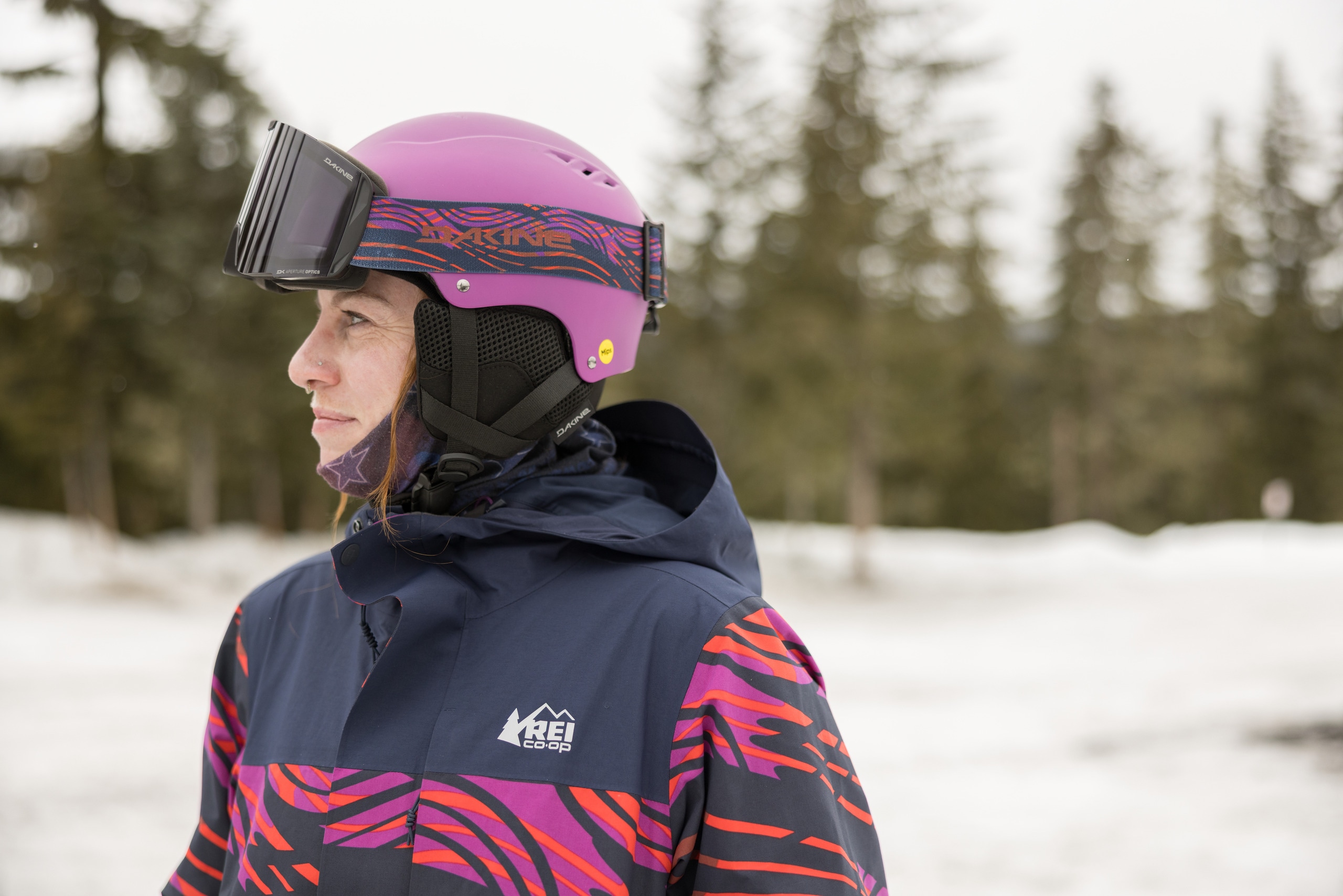If you're a slope newbie, or someone who hasn't been out for a while, you might be wondering what to wear for an upcoming ski or snowboard session at the local resort. This article lays out the basics to keep you warm and protected from winter weather—without cramping your style.
Here's a quick primer on what to wear skiing or snowboarding:
- Base layer (or long underwear)
- Light fleece or wool top
- Ski or snowboard socks
- Ski or snowboard jacket
- Ski or snowboard pants (or bibs)
- Gloves or mittens
- Helmet
- Goggles
- Neck gaiter or balaclava
Long underwear (or base layer): This layer wicks sweat off your skin and keeps you warm. Choose wool, synthetic or silk (not cotton). You'll want lightweight or midweight depending on the outside temperature and whether you run hot or cold.
Light fleece or wool top: Wear it over your long underwear top in the car and the lodge; wear it under your jacket to add warmth on the slopes.
Ski or snowboard socks: Ski and snowboard socks are taller than your boots and not overly thick (thick socks can actually make your feet colder if they make your boots too tight and restrict your blood circulation). Some have padding at the shins. Go with wool or synthetic socks and avoid wearing cotton socks because, when cotton socks get wet from snow or sweat, they take forever to dry out.
Ski or snowboard jacket: These are usually waterproof or water resistant, and insulated, with convenient pockets and other snow-specific features. A waterproof/breathable rain jacket over your fleece or wool top would be sufficient as well, though its slickness might lengthen any slides you make after a fall.
Ski or snowboard pants (or bibs): Waterproof or water resistant, and insulated, these sometimes have convenient pockets, vents and features to prevent snow entering your boots. Waterproof/breathable rain pants would be sufficient as well. You can add fleece pants underneath for greater insulation.
Gloves or mittens: Choose waterproof or water resistant and insulated. Generally, greater thickness equals greater warmth, and mittens tend to be warmer than gloves, but you sacrifice some dexterity (though inner liner gloves offer versatility). You don't need ski- or snowboard-specific gloves or mittens, but they do have some nice features, like built-in goggle wipes and long cuffs that go up to mid-forearm to keep snow out.
Helmet: Not mandatory, but highly recommended, a ski helmet helps protect your head, and it keeps your head and ears warm and dry. (Wear a warm hat if you're not using a helmet.) Most ski resorts rent these, so you don't have to buy one right away.
Goggles: These protect your eyes from wind, snow and glare. Check that they work with your helmet, your face shape and fit over glasses if you wear them. You want them to fit without gaps. If you don't own a pair, see if you can borrow some from a friend for a day. If it's not actively snowing, sunglasses are a fine substitute.
Neck gaiter or balaclava: You can pull a neck gaiter up over your nose in icy temps; a balaclava offers even greater coverage.
Video: What to Wear Skiing and Snowboarding
What's the Difference Between Ski and Snowboard Clothing?
Traditional skiwear was sleek because of the sport's Olympic heritage and need for speed. Snowboard clothing is slightly looser, kind of like the sport's counterculture origins. That styling carries over in ski and snowboard brands today, but the features aren't dramatically different. Which is a long way of saying skiwear would work fine for snowboarding and vice versa.
Clothing and Dressing Tips for Skiing and Snowboarding
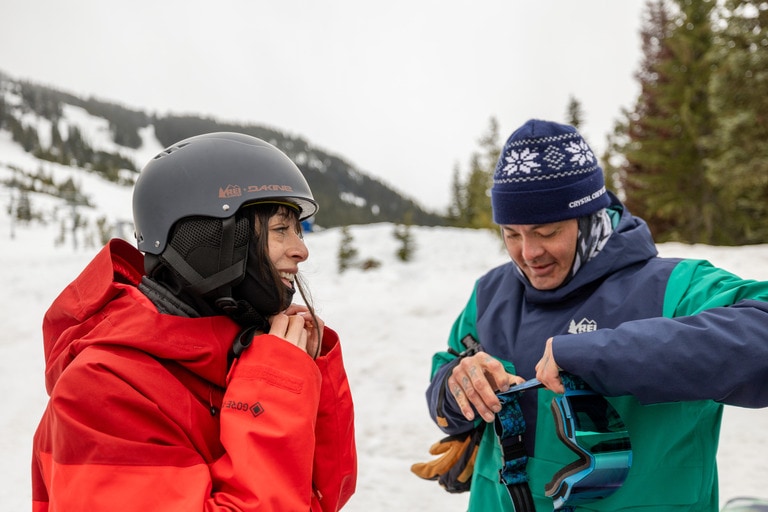
- Dress for your climate: People in the Pacific Northwest might want fully waterproof coverage and a little less insulation, for example, than folks in Rocky Mountain states, where conditions tend to be drier and colder.
- Layering your clothing is the key to comfort: Wear layers that can be removed if the day warms up and added if you get chilled. (For more details, read Layering Basics.)
- Save by using what you already own: If you're on a budget, existing outdoor clothing can do in a pinch, though it will lack some specific features found on skiwear.
- Invest when it makes sense: If you bought a season pass, then paying a few extra dollars for premium gear might make sense. If you only plan to go occasionally, there's no need to splurge. Renting gear at first is a great way to save money and figure out what you might want to invest in sometime in the future.
- Waterproof and synthetic is a winning combo: Jackets, pants, gloves and mittens should be waterproof and have synthetic insulation, a combo that ensures that damp conditions or your own sweat don't compromise warmth. A few might instead be merely water resistant and/or have down insulation, attributes that are fine in dry conditions. (For more details, read What Does it Mean When a Jacket Is Water Resistant? and Down vs. Synthetic: Which Insulation Is Right For You?.)
- Add handwarmers and footwarmers as needed: Many skiers consider handwarmers to be an essential; chemically activated when removed from their sealed pouch, these packets or insoles provide hours of heat even when your gloves and socks have gotten wet and cold.
- Look for Recco® Reflectors: This safety feature is found on some helmets, jackets and pants. If your gear has one of these reflectors, it can help a ski patroller equipped with a Recco detector to quickly locate you after an avalanche. There's nothing electronic to turn on—you simply have to be wearing an item with a Recco reflector on it and be on the slopes of one of 800+ ski resorts worldwide that are Recco equipped. You can select Recco as an attribute when you shop on REI.com. (Note that a Recco reflector is different from an avalanche transceiver that backcountry skiers must carry, turn on and use correctly for a similar purpose.)
- Don't forget the sunscreen: Avoid the racoon look and slather on the sunscreen on exposed skin. Sunlight is more intense at higher altitudes, and snow glare reflects the sun and intensifies sunburn and skin damage. Don't forget the undersides of your chin, nose and ears.
What to Look for in Ski and Snowboard Jackets
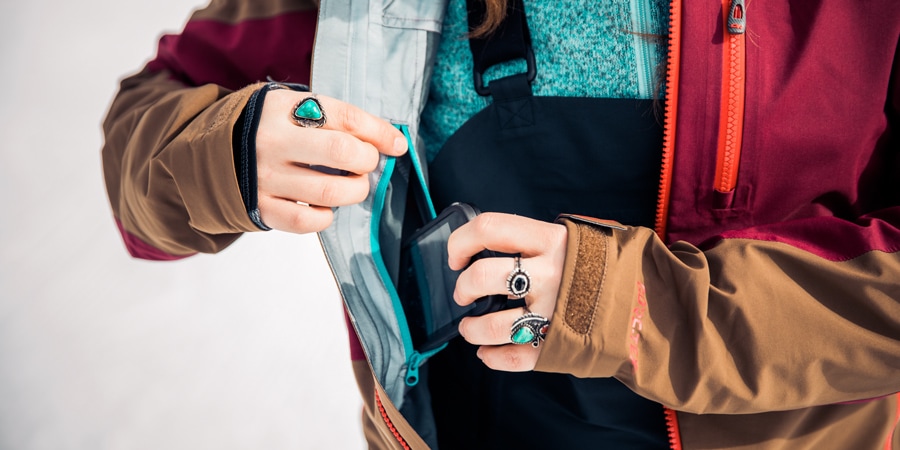
- 3-in-1 design: Jackets with this feature let you detach the outer shell from the inner insulating layer. You can leave the inner piece in your ski locker on mild days, or leave the outer shell behind if the inner jacket is wind resistant and the skies are a bright blue hue. Traditional jackets are less versatile, but you only have a single garment to worry about.
- Lots of pockets: Most resort skiers don't carry packs, so it's nice to have plenty of places to stash essentials.
- Specialized pockets: Some jackets have a clear sleeve for a lift pass; some might have an inner pocket with a soft liner to hold goggles.
- Powder skirt: This inner gasket snugs around your waist to prevent snow from creeping inside during a fall; cuff gaskets perform a similar function.
- Specialized hoods: Some jackets let you remove them; others allow you to adjust them to fit over a helmet.
- Zippered vents: Pit zips or core vents let you add and adjust ventilation.
What to Look for in Ski and Snowboard Pants
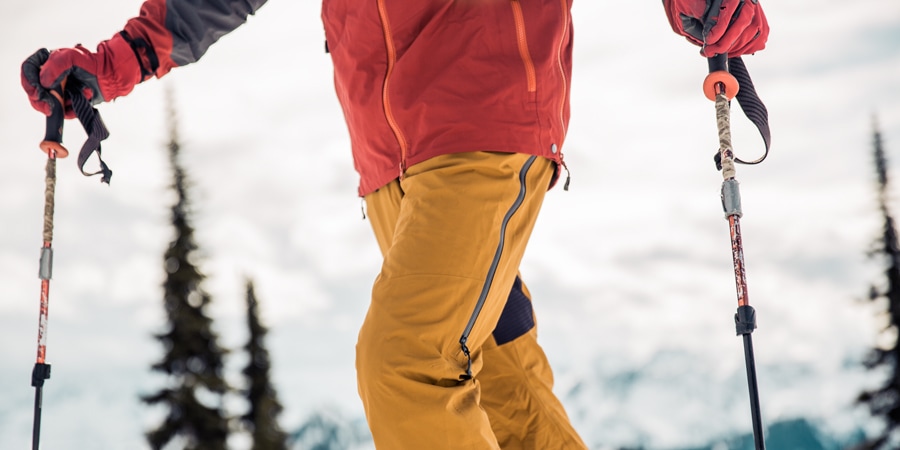
- Bib styles: High in front, these fasten with suspenders; they are a little warmer and less prone to snow getting inside than standard pants. If you like suspenders but not full-on bibs, you can buy those separately. Keep in mind that bibs tend to be fussier to get on and off for bathroom breaks. Read more about the pros and cons of snow pants vs. bibs.
- Snow gaiters: These built-in internal cuff gaskets help seal out snow.
- Thigh vents: These let you add and adjust ventilation — you can build up a lot of heat when you're working hard, even on very cold days.
- Reinforced inner ankles: These patches protect your pant cuffs from sharp metal edges.
What to Look for in Ski and Snowboard Gloves and Mittens
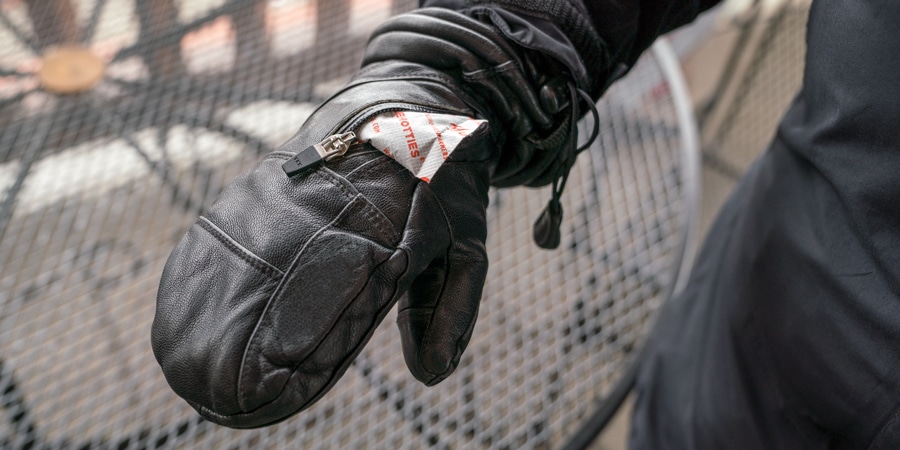
- Mittens and gloves: Mittens group fingers for shared warmth, but gloves offer more dexterity. You might also find hybrid designs that group some fingers together to split the difference.
- Removable liners: Thin liner gloves can be slipped out when you want to do detailed tasks, or left inside for maximum protection (liner gloves also dry faster when removed).
- Heat-packet pockets: Sized for you to slip in a handwarmer; these can double as vents on mild days.
- Thumb wipes: These soft fabric areas let you easily dab your nose or wipe your goggles.
- Goggle squeegee: This raised rubber strip on the thumb or forefinger works like a wiper blade on your goggles.
- Touch-screen compatibility: Some gloves feature fingertips that can work with your phone or other touch-screen gadget.
Shop Snowboard Gloves and Mittens
